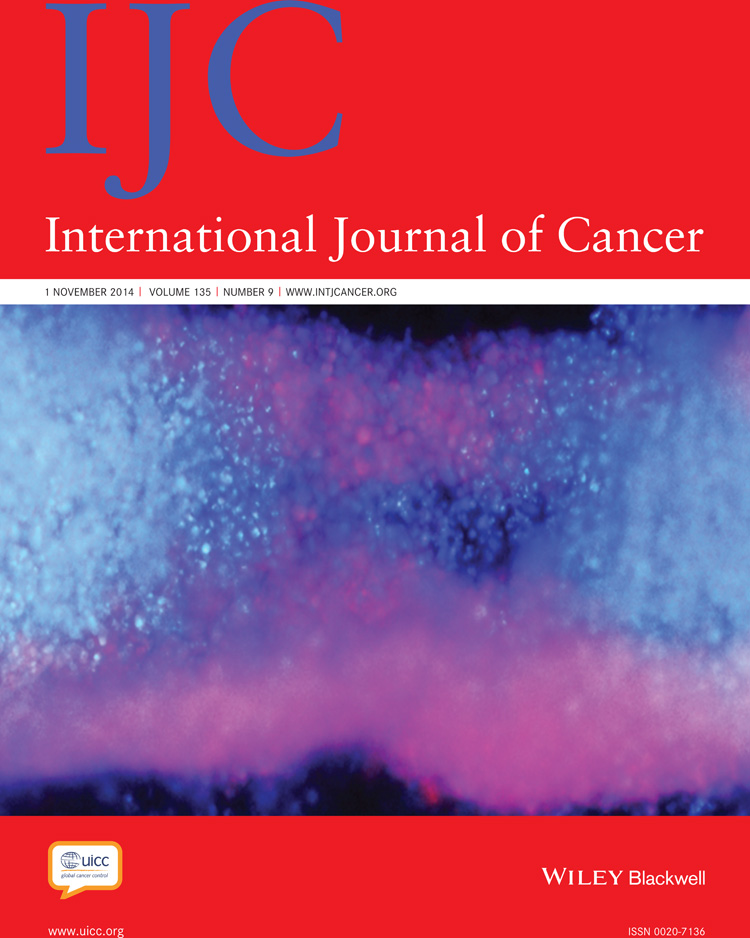Stage at breast cancer diagnosis and distance from diagnostic hospital in a periurban setting: A South African public hospital case series of over 1,000 women
Conflicts of interest: Nothing to report
Abstract
Advanced stage at diagnosis contributes to low breast cancer survival rates in sub-Saharan Africa. Living far from health services is known to delay presentation, but the effect of residential distance to hospital, the radius at which this effect sets in and the women most affected have not been quantified. In a periurban South African setting, we examined the effect of a geographic information system (GIS)-measured straight-line distance, from a patient's residence to diagnostic hospital, on stage at diagnosis in 1,071 public-sector breast cancer patients diagnosed during 2006–2012. Generalized linear models were used to estimate risk ratios for late stage (stage III/IV vs. stage I/II) associated with distance, adjusting for year of diagnosis, age, race and socioeconomic indicators. Mean age of patients was 55 years, 90% were black African and diagnoses were at stages I (5%), II (41%), III (46%) and IV (8%). Sixty-two percent of patients with distances >20 km (n = 338) had a late stage at diagnosis compared to 50% with distances <20 km (n = 713, p = 0.02). Risk of late stage at diagnosis was 1.25-fold higher (95% CI: 1.09, 1.42) per 30 km. Effects were pronounced in an underrepresented group of patients over age 70. This positive stage–distance association held to 40 km, and plateaued or slightly reversed in patients (9%) living beyond this distance. Studies of woman and the societal and healthcare-level influences on these delays and on the late stage at diagnosis distribution are needed to inform interventions to improve diagnostic stage and breast cancer survival in this and similar settings.
Abstract
What's new?
Later stage at diagnosis is known to be associated with poor breast cancer survival and is a particular problem in Sub-Saharan Africa. This study sought to quantify the effect of the distance from the hospital on breast cancer stage at diagnosis in a peri-urban public South African population. They found that living beyond just 20 km away increased the likelihood of a late-stage at diagnosis, a shorter distance than previously thought. This effect was more noticeable in an underrepresented population of women over the age of 70. Targeting efforts for early diagnosis of breast cancer in these women could help reduce the number of lives taken by breast cancer in these settings.




